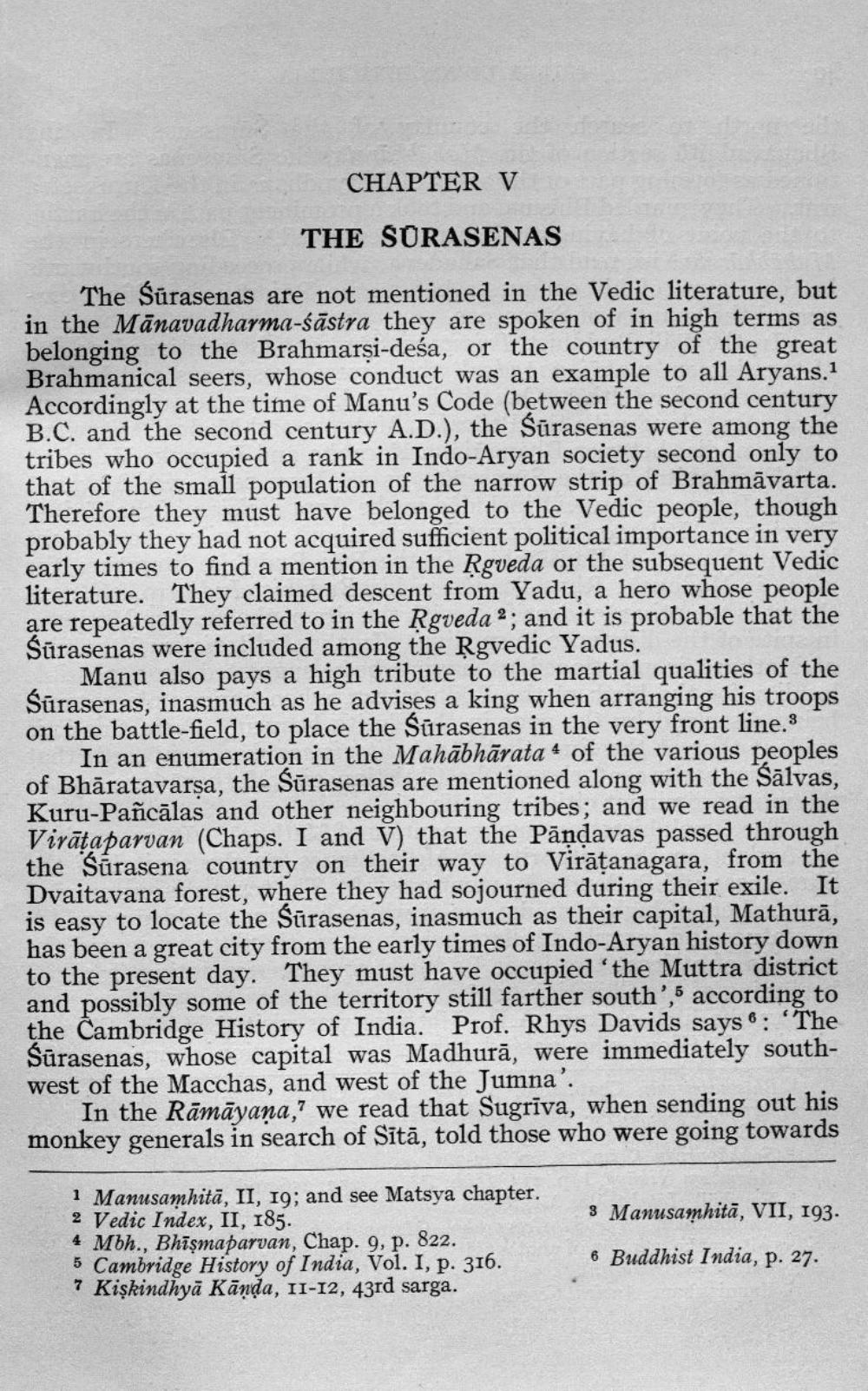________________
CHAPTER V
THE SURASENAS
The Surasenas are not mentioned in the Vedic literature, but in the Manavadharma-sastra they are spoken of in high terms as belonging to the Brahmarși-deśa, or the country of the great Brahmanical seers, whose conduct was an example to all Aryans.1 Accordingly at the time of Manu's Code (between the second century B.C. and the second century A.D.), the Surasenas were among the tribes who occupied a rank in Indo-Aryan society second only to that of the small population of the narrow strip of Brahmävarta. Therefore they must have belonged to the Vedic people, though probably they had not acquired sufficient political importance in very early times to find a mention in the Rgveda or the subsequent Vedic literature. They claimed descent from Vadu, a hero whose people are repeatedly referred to in the Rgveda 2; and it is probable that the Surasenas were included among the Rgvedic Yadus.
Manu also pays a high tribute to the martial qualities of the Surasenas, inasmuch as he advises a king when arranging his troops on the battle-field, to place the Surasenas in the very front line.3
In an enumeration in the Mahabharata of the various peoples of Bharatavarsa, the Surasenas are mentioned along with the Salvas, Kuru-Pañcālas and other neighbouring tribes; and we read in the Viraṭaparvan (Chaps. I and V) that the Pandavas passed through the Surasena country on their way to Viraṭanagara, from the Dvaitavana forest, where they had sojourned during their exile. It is easy to locate the Surasenas, inasmuch as their capital, Mathurā, has been a great city from the early times of Indo-Aryan history down to the present day. They must have occupied 'the Muttra district and possibly some of the territory still farther south',5 according to the Cambridge History of India. Prof. Rhys Davids says: "The Śūrasenas, whose capital was Madhura, were immediately southwest of the Macchas, and west of the Jumna'.
In the Ramayana," we read that Sugrīva, when sending out his monkey generals in search of Sita, told those who were going towards
1 Manusamhita, II, 19; and see Matsya chapter. 2 Vedic Index, II, 185.
822.
4 Mbh., Bhismaparvan, Chap. 9, p. 5 Cambridge History of India, Vol. I, p. 316.
7 Kişkindhya Kanda, 11-12, 431d sarga.
3 Manusamhita, VII, 193.
6 Buddhist India, p. 27.




